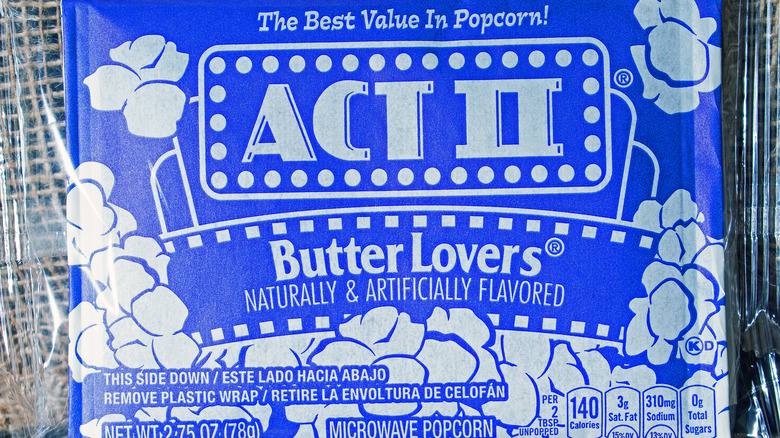Why The First-Ever Microwave Popcorn Needed Refrigeration
Microwave popcorn is one of those conveniences in life that people can take for granted, as some consumers are even gravitating to pre-popped popcorn for even more ease (via AdAge). Yet, in only a few minutes, you can have a bag of hot, fluffy, buttery popcorn for your next streaming binge or movie marathon. With many household names producing microwave popcorn — including Orville Redenbacher, ACT II, and Pop Secret — perhaps the only hard part is picking a brand.
Just how did someone get the idea to use wildly experimental microwaves to quickly pop corn kernels? Microwave popcorn's origin story, as related by Cook'n, involves the accidental discovery of the microwave itself. In 1946, Raytheon Corporation scientist Percy Spencer was working with a magnetron, a device that's now used to power microwaves (via Brittanica), when he noticed the chocolate bar in his pocket melted. Spencer then experimented with other foods, including placing corn near the device until the kernels popped. This not only gave root to the concept of the microwave itself, but also the invention of microwave popcorn, of which Spencer holds the patent for.
However, the first mass-marketed brand of microwave popcorn was a little different — and a little messier — than what we know today.
Microwave popcorn used to include real butter
The year is 1987, and although Cold War tensions were beginning to slowly cool between the U.S. and the Soviet Union via the INF Treaty, a war was still raging in supermarket snack food aisles. General Mills, Orville Redenbacher, Pillsbury, and Nabisco were engaged in a race to become the microwave popcorn magnates, the salty Scarfaces of a $250 million snack product (via The New York Times). While Pillsbury did introduce microwave popcorn via vending machines in the 1970s, according to Popcorn Boss, the first mass-marketed popcorn company was Act I.
Act I, the predecessor to the modern-day ACT II, used real butter in its popcorn. Real dairy products are perishable if left out in the open, so the popcorn needed to be kept in the refrigerator or freezer. In 1984, ACT I became ACT II, and introduced a shelf-stable version made with "butter flavoring." It may not have been real butter, but the switch did remove the need to keep the product cold.
If these popcorn patterns continue, perhaps ACT II will become ACT III and bring back real butter someday in the future.

